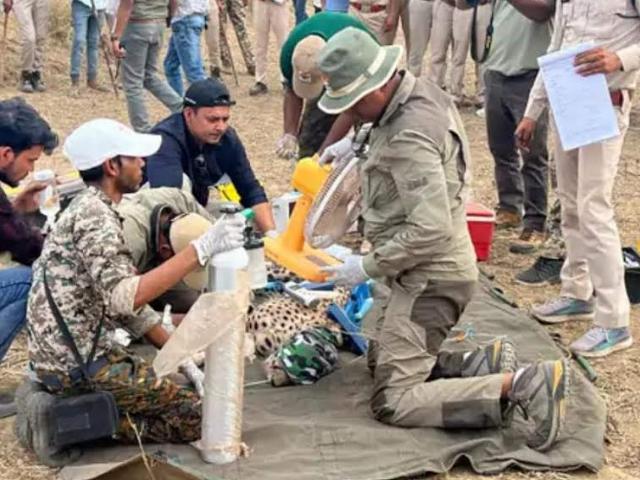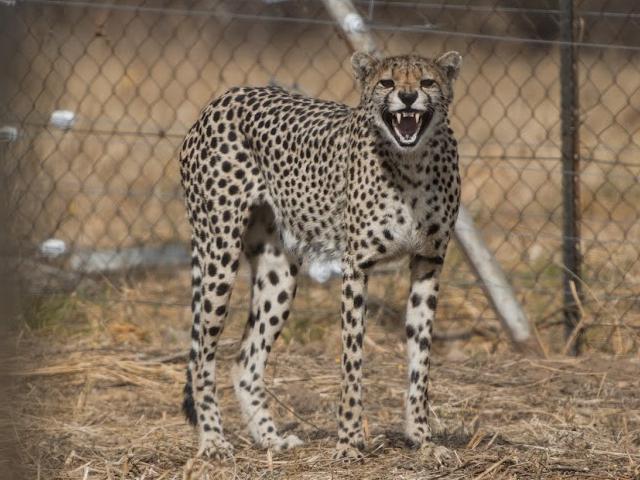Multiple cheetah deaths in Kuno raise questions about habitat limits, prey scarcity, and management. A data-driven look at the challenges facing India’s cheetah project T wo back-to-back cheetah deaths—one from a suspected collision inside the forest and another caused by a speeding vehicle—have once again pushed the spotlight onto the ambitious yet troubled cheetah introduction project in Kuno National Park . While officials have issued preliminary statements, the absence of publicly released post-mortem and investigation reports related to the past such cases has deepened concerns about transparency at a time when clarity is essential. The recent incidents highlight the ecological and management challenges that continue to shape the project’s uncertain trajectory. Each Loss Is Significant Setback On December 5, Friday, one of Veera’s cubs recently released into the open forest, died after reportedly separating from its mother. Just two days later, on December 7, another young cheetah...
Cheetah rescue operations after they stray away from the safe confines of congested Kuno national park have been reported regularly in India since September 2022 when the maiden batch of African cat landed in India amidst much fanfare. But the latest visuals of yet another such action- this time in a crowded Rajasthan village in Karauli district-put a question mark again on the safety of the animal. This cheetah had to be handled physically in order to prevent it from falling into a ravine as it cornered at the crest of the ravine after darting amid a gathering of an huge crowd nearby.
Pawan's Life Was At Risk
Rajasthan forest department officials alerted Kuno National Park authorities about the cheetah leading them to a rescue operation. Pawan, the male cheetah had wandered into Rajasthan through Chambal river bank and was spotted by the local villagers who in turn informed the local authorities. “Male cheetah Pavan was rescued from Karauli district in Rajasthan under challenging conditions involving a ravine and a huge crowd of onlookers”, a release issued from the office of Rajasthan forest department. “Pawan was free ranging in Kuno National Park and crossed the inter-state boundary in the human dominated landscape early on May 4 morning. When the team from Kuno – some veterinarians- arrived at the spot, there were a large number of onlookers shouting, making videos and taking pics with their mobile phones . After Pawan was successfully darted , he started moving towards a ravine. One of the veterinarians held his tail and pulled him back.
“ Had he not been held by his tail, the animal; would have been lost”, an eye witness claimed. For the last over a year or so, Pawan and Veera, a female cat- had been roaming across the length and breadth of Kuno. Since April last year, both the cats had to be tranquilized multiple times from as far as 150 kms away from Kuno. Would multiple tranquilisation also lead to health issues to the animal ?This should also be clarified. Experts believe that the cheetahs, known for moving a large distance- keep venturing out to explore new territories which is not allowed to them in Indian conditions as the Indian national parks are surrounded by thickly populated villages. It may lead to man animal conflict . Eight cheetahs from Namibia and 12 from South Africa were brought to Kuno National Park under cheetah introduction project two years ago. The park now has 27 cheetahs including 14 cubs, all of them inside enclosures.
Controversies Chase Cheetah Project
After a spate of deaths in the hot and humid weather conditions in August last year , all the cheetahs were darted and brought back to fenced enclosures for closer examination. Since then, all except Pawan and Veera, continue to remain in enclosures called bomas, where they hunt and feed themselves. Only two animals are in the larger wild grasslands of the 748 sq-km of Kuno but they too keep moving out bringing back the debate over two issues- whether India is suitable for free ranging cheetahs because of small size of its national parks and the carrying capacity of Kuno to sustain 20-21 cheetahs as envisaged in the cheetah action plan. African cheetahs roam around huge jungles, many of them are over 20,000 sq km in size as compared to India jungles .
The largest in India is Hemis national park; a high altitude park in Leh spread over 4,400 sq kms and is famous for snow leopard. India authorities have not been able to gather courage to release 20 cheetahs in Kuno and most of the life after they landed in India has been spent in small bomas. Among other things, the original idea was to develop the grasslands of India by conserving cheetahs. But the way things stand today, it appears not only cheetah but the cheetah action plan has also strayed. “Is it a conservation project or an ill -conceived plan jeopardizing management of many other species lacking funds for their protection projects”, a senior official of the Union ministry of environment, forest and climate change commented.
By Deshdeep Saxena
Banner Image: Video grab from the cheetah rescue operation, second image sourced from Kuno National Park




Comments
Post a Comment